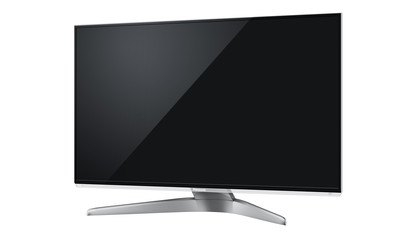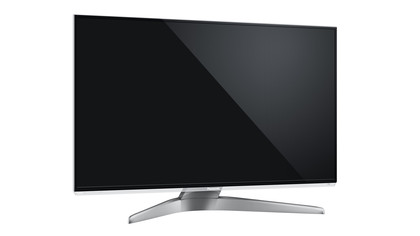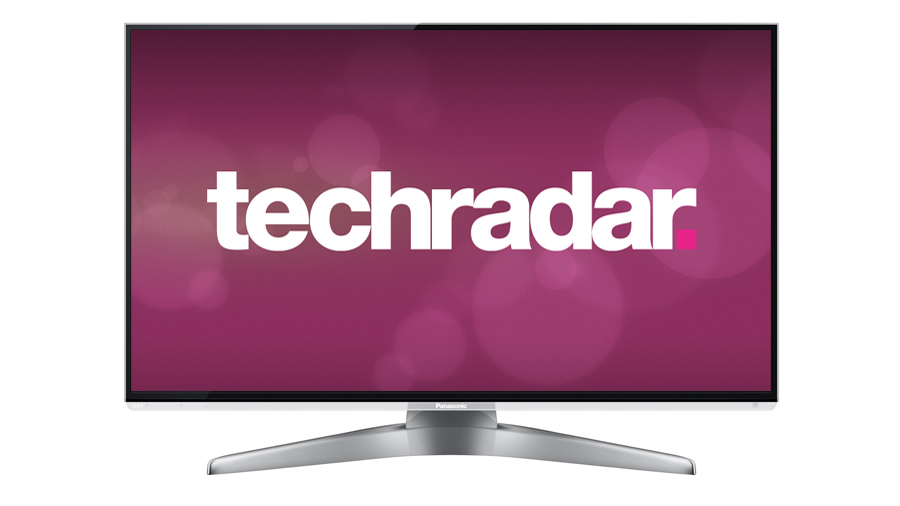Why you can trust TechRadar
Right from the off the Panasonic TX-L42WT50's pictures exude high-end quality, looking polished to within an inch of their lives by the machinations of all the processing power the TV has at its disposal.
Colours are particularly striking. They look intensely vibrant and well saturated, but more importantly - since this is what separates them most clearly from the efforts of cheaper TVs - they also display an immense gamut and almost infinite subtlety when it comes to portraying the sort of tiny gradation steps that are so important when reproducing accurate colour blends without striping or errors.
In fact, in this latter respect the Panasonic TX-L42WT50's pictures are superior to those of many of Panasonic's plasma TVs.
As hoped from the fancy-sounding 1600Hz motion processing engine, meanwhile, the Panasonic TX-L42WT50 does an excellent job of handling movement in its images. There's very little blurring at all, even without any of the numerous motion processing options active.

Yet if you do bring these motion processing settings in, they add obvious fluidity (especially with 3D) and motion sharpness without making the picture look unnatural - so long as you don't feel tempted to use any of the high-powered motion processing options.
The clarity of the Panasonic TX-L42WT50's motion handling plays a part in the general sharpness and detail visible in its portrayal of HD sources - and actually its standard definition images look pretty clean too, thanks to the ability of the TV's processors to upscale such sources to the screen's Full HD pixel count without exaggerating their inherent noise or leaving them looking soft.
Another notable plus of the Panasonic TX-L42WT50 concerns its effective viewing angle. You can ogle its images from a markedly wider angle down the side than is the case with the majority of LCD TVs - a feat achieved via the TV's use of one of Panasonic's IPS Alpha LCD panel designs. This could be a pretty big deal for anyone with a small room, big family or both.
Having said all this, it must be added that even the Panasonic TX-L42WT50's viewing angle performance is no match for one of Panasonic's plasma TVs.
Contrast
At first glance, the Panasonic TX-L42WT50 also looks pretty handy when it comes to the tricky issue of black level response. During mostly bright scenes, or scenes with a combination of dark and light content, there certainly seems to be a healthy black level response to underpin and counterbalance the already mentioned punch of the set's colours.
However, feeding the TV a few more generally dark scenes does uncover a problem or two.
For starters, with the set's local dimming option left off, the panel's native black level depth really isn't very profound, with markedly more greyness around than you tend to see with many of the other Edge LED TVs in town this year.
Thankfully, activating the local dimming system introduces a pretty emphatic improvement. Dark scenes lose a good deal of the grey misting that seems to hang over them without local dimming in play, yet impressively the improved black level response doesn't stop the TV from being able to produce a fair amount of the shadow detailing that's so important to making dark scenes look truly believable.

It does have to be said, though, that while the Panasonic TX-L42WT50's local dimming is a classy effort, it's not as all-round outstanding as the system used in the Sony 46HX853.
In particular, the Sony does a better job of handling shadow detail, plus there's slightly more evidence on the Panasonic of unnatural blocks of light around very bright image elements when they appear against dark backdrops. To be fair, the Panasonic L42WT50 is still pretty accomplished where keeping a lid on backlight blocking is concerned - it's just that Sony has rather shifted the goalposts in this regard.
3D picture
The Panasonic TX-L42WT50 arguably saves its best till last, with its 3D performance. Obviously 3D isn't everyone's cup of tea, but you certainly can't knock Panasonic for going to so much trouble on the Panasonic TX-L42WT50 to prove that LCD really can do Full HD 3D just as well - if not better - as plasma can.
One area where the Panasonic TX-L42WT50's 3D pictures definitely outgun even the 3D efforts of Panasonic's 2012 plasma TVs is their colour punch and brightness. Yes, Panasonic's 3D glasses still seem to take a little more light out of images than some of the latest glasses from rival brands, but the screen is sufficiently dynamic with its output to counter this dimming to a satisfying degree.
It's also handy that the dimming effect of donning the 3D glasses serves to obscure to some extent the Panasonic TX-L42WT50's small black level problems.
The Panasonic TX-L42WT50 is blissfully free, meanwhile, from the dreaded active 3D issue of crosstalk noise. The double ghosting artefact that's still apparent to some degree on almost all 3D LCD TVs - including the otherwise stellar Sony 46HX853 - is here almost completely removed, only rearing a marginally ugly head on extremely rare occasions. Excellent.
Finally, as noted in passing in the 2D section of the review, the power behind the Panasonic TX-L42WT50's picture processing enables it to deliver some of the most impressive motion handling with 3D material we've seen to date, keeping judder and resolution loss pretty much completely out of play - regardless of whether the motion is across or in and out of the 3D picture.
Panasonic has long been a popular brand with the gaming community. So it's good to find that the Panasonic TX-L42WT50 delivers its all-round impressive pictures with only around 30ms of input lag. This is a low enough to figure not to have any significant impact on your gaming performance.
John has been writing about home entertainment technology for more than two decades - an especially impressive feat considering he still claims to only be 35 years old (yeah, right). In that time he’s reviewed hundreds if not thousands of TVs, projectors and speakers, and spent frankly far too long sitting by himself in a dark room.

